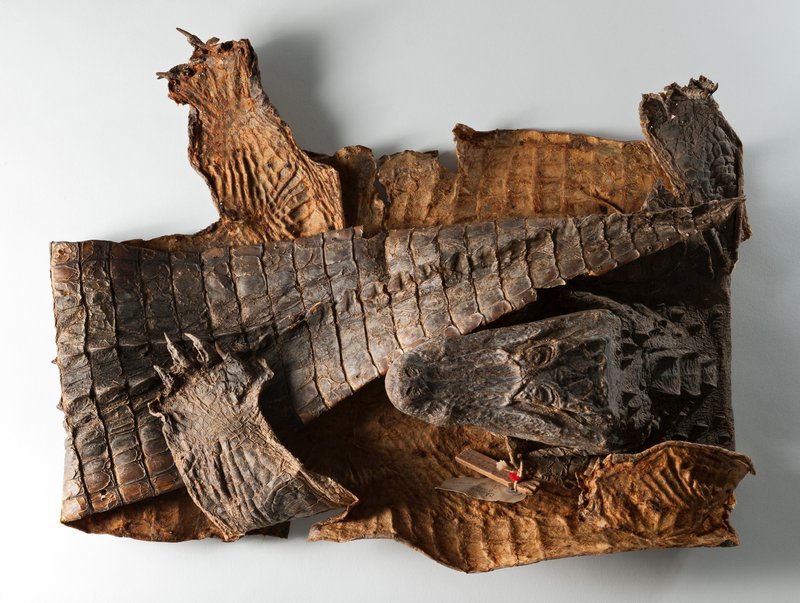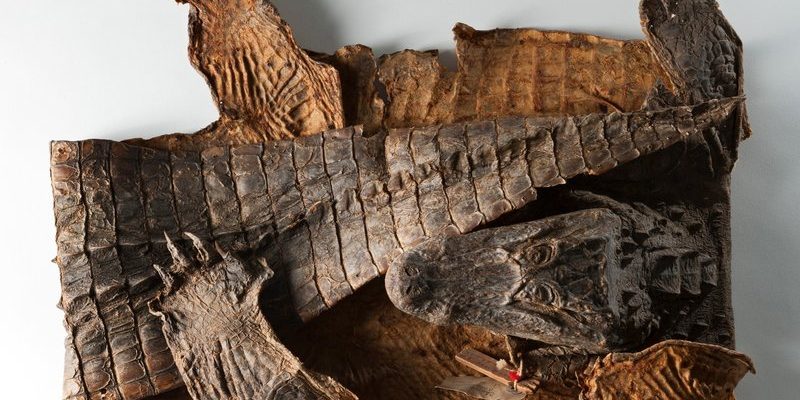
Imagine sipping coffee while chatting about this ancient reptile. It’s not just another alligator; it’s been around since the time when dinosaurs roamed the Earth. This little-known creature is a prime example of how evolution shapes species, allowing them to thrive in specific habitats. So, let’s take a closer look at the journey of the Chinese alligator and discover how it has evolved over time to become the unique animal we see today.
What is the Chinese Alligator?
The Chinese alligator, or *Alligator sinensis*, is native to a few freshwater lakes and rivers in eastern China. Unlike its more famous American cousin, this alligator is smaller, reaching lengths of up to 7 feet. While that still sounds pretty intimidating, it’s actually much easier to manage than its larger relatives, which can grow to over 13 feet!
This alligator is also known for its low, rounded snout—an indication of its diet and habitat. These creatures primarily feed on fish, frogs, and small mammals. Their smaller size allows them to navigate the shallow waters of swamps and rivers where they thrive. Unfortunately, today, the Chinese alligator is classified as critically endangered. Habitat destruction and poaching have severely impacted their population, making their story even more compelling.
What sets the Chinese alligator apart? For one, its behavior is quite distinct. It tends to be more docile and less aggressive than other alligator species. This can be attributed to its unique evolutionary adaptations designed for survival in a particular environment.
The Evolutionary Path of Alligators
Alligators have a long evolutionary history that dates back about 200 million years. They belong to a group called crocodylians, which also includes crocodiles and caimans. The early ancestors of crocodilians emerged during the late Triassic period, evolving from land-dwelling reptiles. Over time, these reptiles adapted to life in water, leading to the various species we see today.
Interestingly, the modern alligator lineage diverged from other crocodilians around 37 million years ago. During this time, they developed specific characteristics that suited their environments, like their powerful jaws and keen senses. The Chinese alligator’s ancestors made their way to what is now eastern China, adapting to the local climate and habitat.
The fossil record shows a variety of alligator-like creatures that existed long before the Chinese alligator we recognize today. Some of these species were much larger, roaming the Earth in very different ecosystems. The gradual changes over millions of years demonstrate how resilient life can be, adapting to shifting environments and challenges.
Unique Adaptations of the Chinese Alligator
The Chinese alligator has developed several fascinating adaptations that set it apart from other species. First, its smaller size and rounded snout allow it to maneuver effectively through shallower waters. This adaptation is crucial in its natural habitat, where it often hunts in swampy areas packed with vegetation.
Another interesting feature is its behavior. Unlike many alligator species known for aggressive tendencies, the Chinese alligator tends to be more shy and reclusive. It prefers to remain hidden, which helps it avoid predators and human interaction. This behavior is a direct result of the selective pressures it has faced in its natural habitat.
Additionally, these alligators are known for their ability to thrive in lower temperatures compared to their relatives. They have adapted to the cooler climates of eastern China, where they can often be found basking in the sun on chilly mornings. These small yet significant adaptations help maintain their presence in a world that’s increasingly hostile to their survival.
Conservation Status and Efforts
Today, the Chinese alligator is classified as critically endangered. With fewer than 150 individuals remaining in the wild, efforts to conserve this unique species are more important than ever. The primary threats to their survival include habitat loss due to urbanization and agriculture, as well as poaching.
Conservation organizations are working tirelessly to protect their natural habitats and promote breeding programs. These initiatives help increase the population of Chinese alligators in controlled environments, hoping to eventually reintroduce them into the wild. As delicate as their situation is, there is a glimmer of hope with these dedicated efforts.
Local communities also play a crucial role in conservation. Educational programs aim to raise awareness about the importance of protecting the Chinese alligator and its habitat. Teaching residents about the ecological roles these unique creatures play can promote coexistence and reduce human-wildlife conflict.
The Role of the Chinese Alligator in Its Ecosystem
The Chinese alligator plays a vital role in its ecosystem. As a predator, it helps maintain the balance of local aquatic environments by controlling the populations of prey species, such as fish and frogs. This helps prevent overpopulation and contributes to the overall health of the ecosystem.
Moreover, the presence of the Chinese alligator can influence the behavior and population dynamics of other species in the area. For example, its hunting patterns may affect the distribution of other wildlife, from fish to small mammals. By understanding these interactions, scientists can better appreciate the complexities of ecological relationships.
Finally, the conservation of this species benefits not just the alligator itself but the entire ecosystem, including plants and other animals that depend on healthy water systems. Protecting the habitats of the Chinese alligator means safeguarding the environmental integrity of the regions they inhabit.
The evolutionary history of the Chinese alligator is not just a study of a unique species; it’s a window into the past and a reminder of how delicate our planet’s ecosystems can be. With a lineage that stretches back millions of years, the Chinese alligator illustrates the intricate dance of evolution, adaptation, and survival.
As we continue to face environmental challenges, understanding and protecting the Chinese alligator becomes even more critical. Conservation efforts are essential not just for this reptile but for the overall health of the ecosystems it inhabits. By fostering awareness and protecting their habitats, we can ensure that future generations get to appreciate these remarkable creatures in the wild.
Let’s take a moment to reflect on the importance of preserving our natural world. Every small effort counts, and together, we can make a difference in the lives of the Chinese alligator and the biodiversity of our planet.

